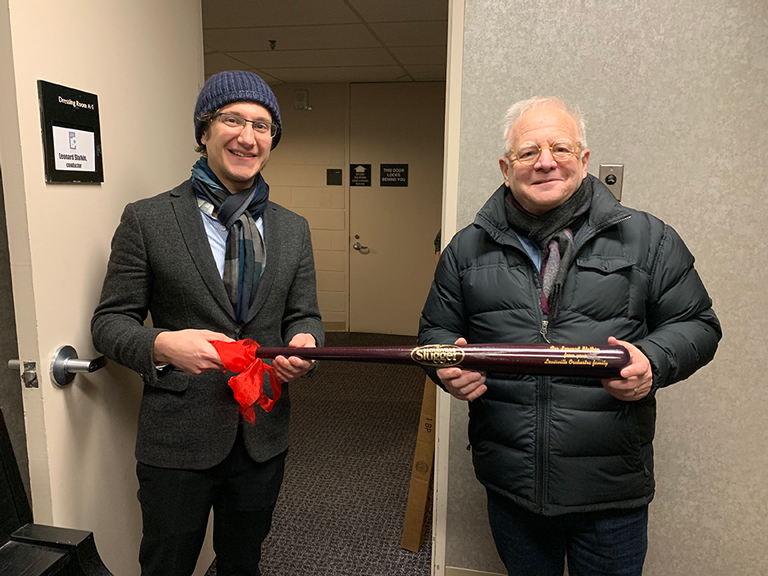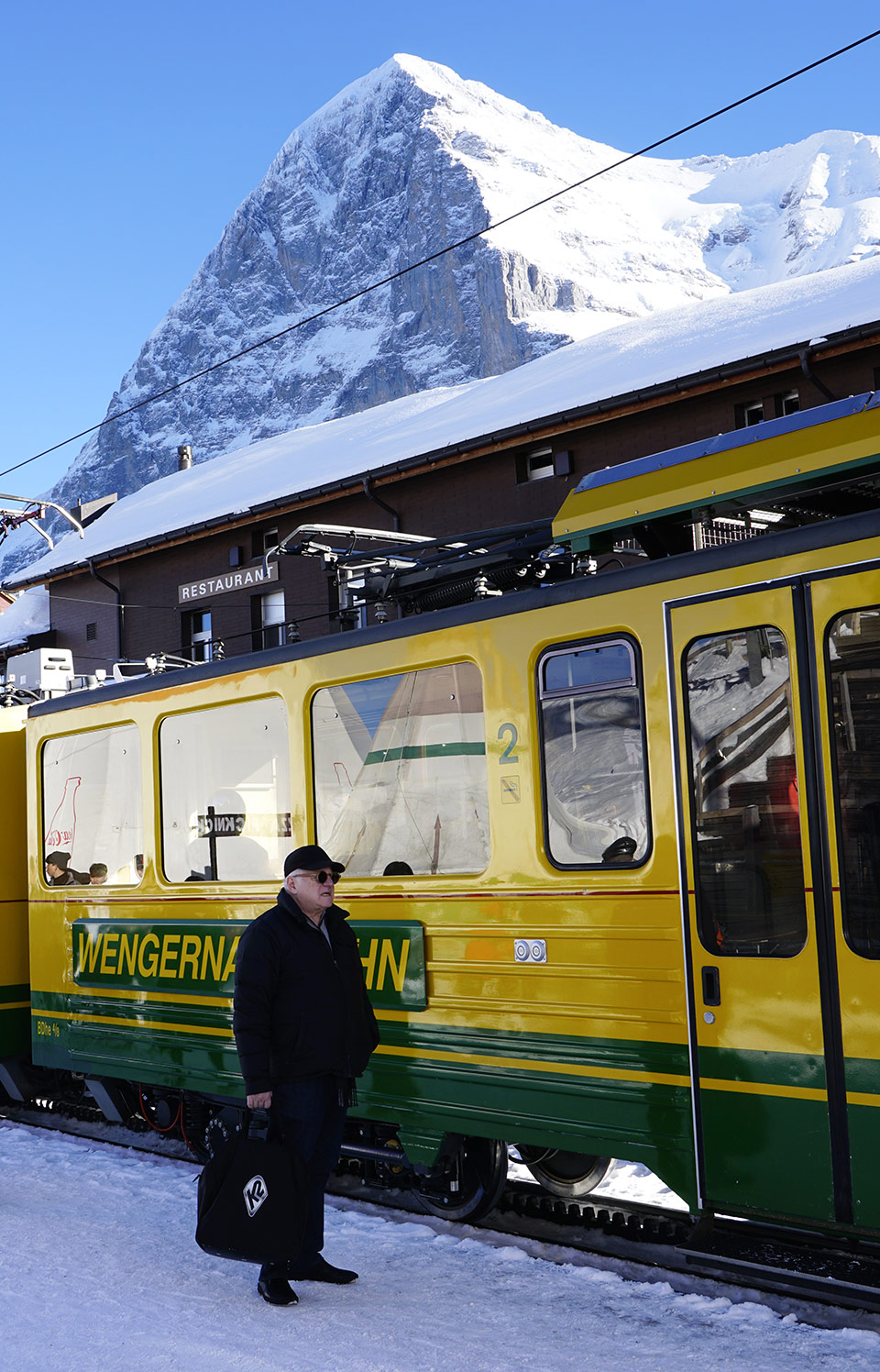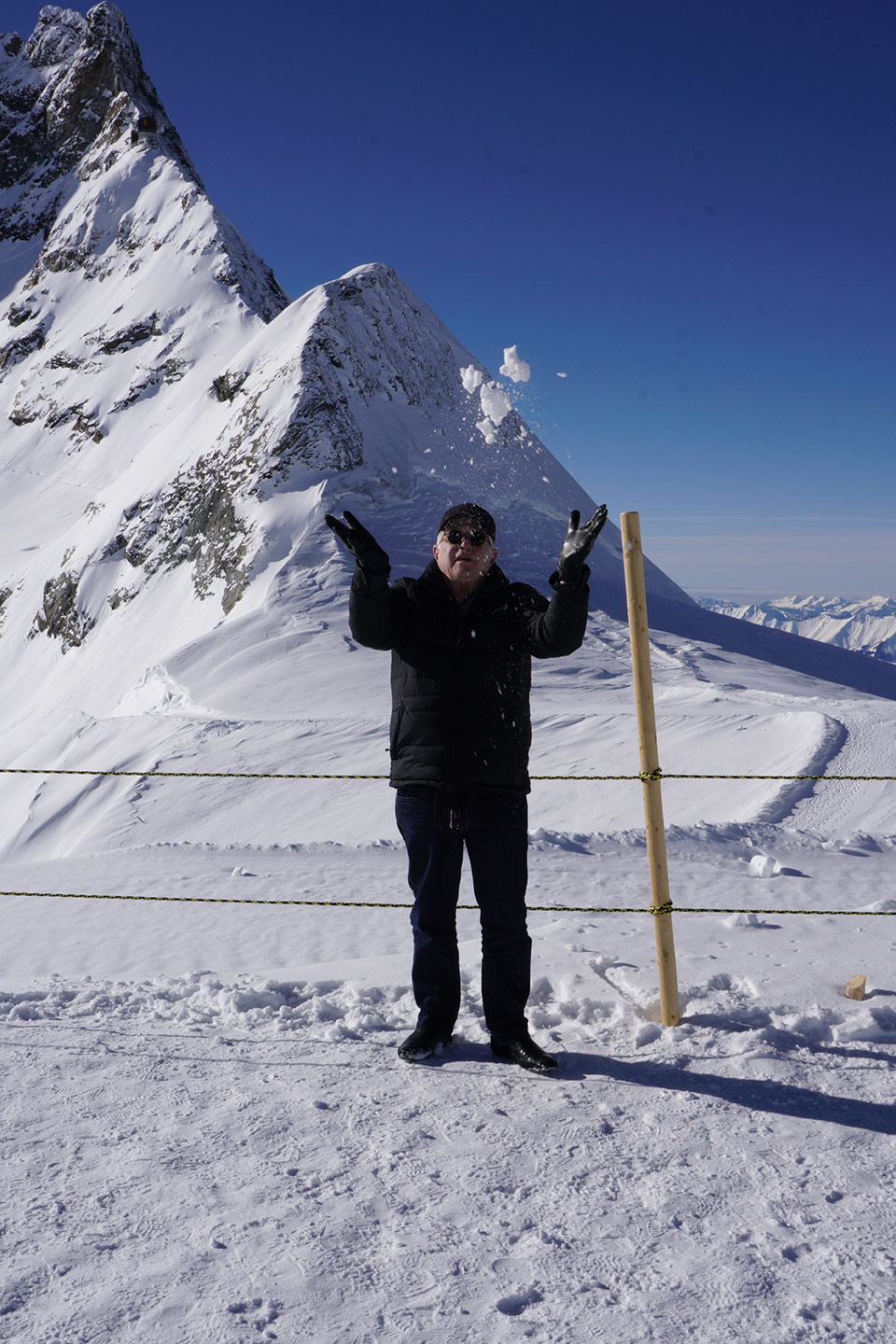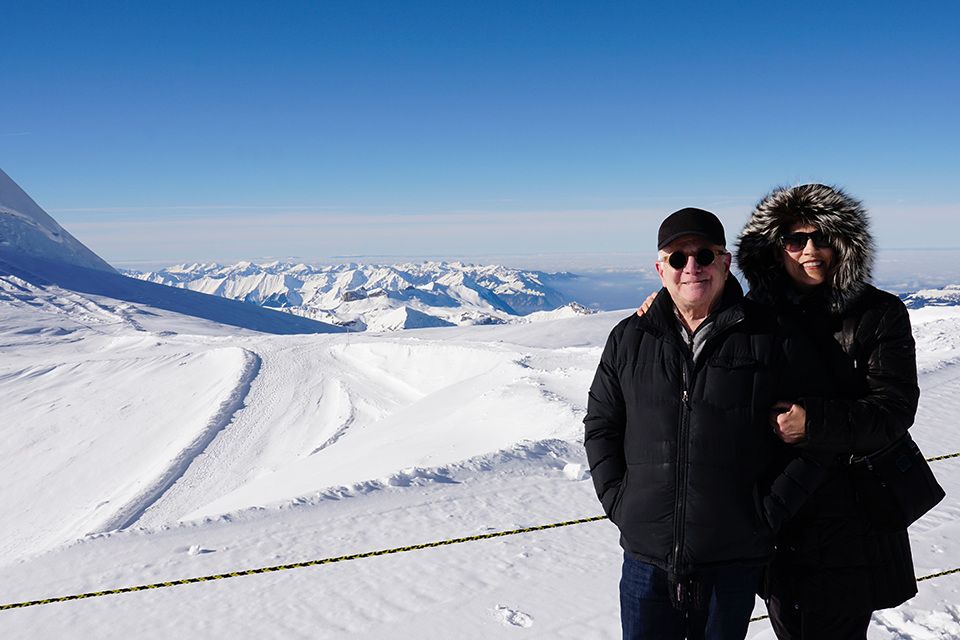Well, that didn’t take long.
After a lovely New Year’s Eve concert in St. Louis with music, fun and friends, Cindy and I got home around 10:30. I had written most of last month’s web piece and sent it off to post. It never dawned on me that there might just be something cringeworthy to start off 2019.
I have never been one to do much to celebrate the arrival of the next twelve months. It was sort of exciting the first time my parents let me stay up to watch the ball drop in Times Square, but I was in Los Angeles, so I actually saw it at 9:00 in the evening. In 1968, I did venture down Broadway, but not to get into the crowd gathered to hoot and holler. Instead I went to the theater with the largest screen to view 2001: A Space Odyssey. Some years I led concerts in various parts of the world, but mostly I stayed in, once in a while tuning in to watch the last moments of the proceedings.
It should have occurred to me not to do so this year, as I got a glimpse of what might happen after turning on the TV last year at this time. Gone were the days of watching the ball drop and seeing the year pop up. Sometimes we got to see how Australia rang in the new year first and view clips of other parts of the world enjoying the celebration. Over time, this has turned into a spectacle on pretty much every network, including the news shows.
We used to wait for Guy Lombardo and his Royal Canadians to serenade us with “Auld Lang Syne,” complete with wide vibrato in the saxophones. Once in a while a celebrity entertainer would make an appearance, but mostly it was a somewhat sober experience, mixed in with a year-in-review recap and what might be on the horizon.
The word sober does not describe what I have seen the last couple years. How dispiriting to see some of the most talented people who bring us the news night after night reduced to parodies of themselves. Okay, I get that we can use this night to let go a bit, but watching the personalities we trust to give us information in various states of insobriety is truly appalling. I thought about what message this would have sent to me the first time I was allowed to watch the proceedings. Is it really okay to get drunk or high in view of a worldwide audience? If they were actors playing a part, maybe yes. But these are folks that we hold to a more elevated status. When the news anchors resurfaced a couple days later, it was difficult for me to see them in the same light as I once had. Of course, all of us should be able to celebrate this time of year in ways we deem appropriate, but this on-air drinking seemed to do nothing more than feed a petty ratings war.
So TV network folks, get your act together. Try and have fun. Be humorous and entertaining, and have a glass of champagne when the globe hits its mark, but don’t overdo it next year. Please start the new year off with graciousness and style.
***
On a much more pleasant note, my first conducting engagement of 2019 was with an orchestra I had not conducted in 45 years. Ever since I was a youngster, the Louisville Orchestra has always held a special place among America’s ensembles. In 1950, then music director Robert Whitney conceived the idea to commission and record music by composers from the United States. These pieces were then recorded on what became the first record label run by the orchestra itself.
The orchestra produced more than 150 vinyl recordings representing at least 450 works. The Louisville Edition would expand to music by composers worldwide, and several of the works became important pieces in the repertoire. When I came to conduct in 1974, we recorded Norman Dello Joio’s Homage to Haydn, a delightful piece by a sadly forgotten composer.
For the past four years, the Louisville Orchestra has been led by Teddy Abrams. He was my assistant conductor in Detroit for a couple years and demonstrated all the skills needed to revitalize and invigorate any community where he might become music director. And sure enough, all the talk in this town is about Teddy. Whether you go to a formal social function or just pop into a bar, his name is bandied about like a sports star. Even people who do not attend concerts know who he is and what he is doing for the city. My previous role as one of Teddy’s mentors gave special meaning to this particular week. It is not often that a teacher comes to work with his student’s orchestra.
The members of the orchestra showed themselves to be highly talented musicians who share an enthusiasm for their community and a pride in what is being accomplished. They really embraced the experience and expressed excitement about delving into the program.
The Slatkin family was represented by Cindy’s Double Play, which posed no problem for the Kentuckians, who displayed precision and balance within the brass section. My own Kinah showed the strings and percussion to fine effect. And Walter Piston’s Incredible Flutist made a delightful close to the first half, played with sensitivity and humor and marked by excellent contributions from the woodwind soloists.
After the intermission, we turned to Elgar’s Enigma Variations. The orchestra had not played this piece in ten years, and with so many young musicians in the group, it might as well have been a new work. We worked hard on character and dynamic contrast. By the time we got to the concert, it was apparent that much progress had been made over the course of the three days of rehearsal. The audience was more than appreciative, and I was very warmly greeted when I made my first appearance at the top of the evening.
Louisville is in good hands. There is a real pride among the members of the city’s leadership, who clearly realize that there is more than horseracing and bourbon to be enjoyed there. Under Teddy’s direction and the tone he sets through his ebullient personality, this orchestra is an integral part of the fabric of the community. The future looks bright.
***
It had been several months since we were last in Lyon. During that hiatus, the ONL appointed a new music director, Nikolaj Szeps-Znaider. This is a very interesting choice, as most people know him as an outstanding violinist. He has been conducting for several years now, accumulating the experience he will need in order to lead a major orchestra. Everyone is excited about his potential, and the members of the ONL are looking forward to this collaboration. I wish him the very best, knowing that he has inherited an orchestra of outstanding quality.
This was evidenced by their performances with me in the middle of the month. Going a bit off the beaten track, we played two works that are not encountered so often in France. The surprise was that one of them is actually well known but not often performed live. Darius Milhaud wrote Le boeuf sur la toit in the middle of the 1920s, at the height of his influence as a member of Les Six. These composers reacted against German Romanticism and French Impressionism to create music often characterized by humor and everyday references.
In collaboration with Jean Cocteau, Milhaud’s 18-minute score took the form of a ballet centered around a Brazilian bar. Sambas and tangos dominate, but as with other works by this composer around this time, the music is infused with purposeful wrong notes, much the same as Stravinsky would do with his neo-classical style. Utilizing 25 musicians, this lively piece was great fun to play, and the ONL infused it with the style and panache needed to bring Rio to life.
Aside from the Enigma and the cello concerto, the major works by Elgar are not frequent visitors to French orchestras. We were supposed to play his first symphony last season, but that had to be scrapped due to lack of rehearsal time. It was rescheduled for this particular week, and there was a palpable heightening of excitement in the orchestra. They knew the work was difficult, but very few had ever heard it, much less played the symphony.
At first, there was some apprehension. Even with its hints at Wagner, Franck, and other masters of chromaticism, there was a pervading feeling of uncharted territory as we read through the piece. Written in 1906, the symphony does look back rather than moving into the new wave of the 20th century. Several years ago, I conducted the piece in Leipzig, the first performance by the Gewandhaus Orchestra. The orchestra really seemed to dislike the piece, and even with its dedication to Hans Richter, the great German orchestra simply did not comprehend the work.
After the first rehearsal in Lyon, which was a play-through followed by a detailed examination, I was not certain if the orchestra was convinced of the symphony’s merits. But by the time we got to the dress rehearsal, members of the ONL were thanking me for bringing this work to Lyon. Performances were full of life and energy, as well as the all-important lyricism that lies at the heart of this extraordinary symphony. After three concerts, we all felt just a bit closer to the heart of England, even if the Brexit situation came to a chaotic head during this week.
This program also included my first collaboration with the young British pianist Benjamin Grosvenor. His rendition of Saint-Saens’s Second Piano Concerto was full-blooded but also imbued with a fine sense of rubato, making the first movement, in particular, more of a rhapsody. The wit of the scherzo came across well, and the fiery finale brought the audience to its feet. At the first concert, Benjamin played an encore by a composer who is really underrepresented these days. The Lyric Pieces by Grieg are marvels of beauty, and it was a treat to hear one of them presented so lovingly.
***
I had a week off in Switzerland, which was just as well, because the upcoming February schedule of all-American programs in Bern and Detroit would be intense and exhausting. There was time to do some sightseeing and museum hopping. The Zentrum Paul Klee is a contemporary building with an unusual way of presenting the artist’s works. Rather than just offering a sampling from different periods, they choose to focus on a subject—this time around animals—and present those works exclusively. One can, however, find other Klee objects in other parts of the city.
Heading up the mountains, with four trains going and five returning, we went to what is sometimes called “the top of the world”—perhaps, if you leave out those peaks that are only reachable by foot. Still, at 12,000-or-so feet, the Jungfrau is most impressive. Jagged cliffs, snowcapped heights and cold temperatures prevail. And some of the Swiss villages one passes through are totally charming. I never learned to ski, but after watching these equipment-laden persons lugging all manner of gear onto the trains, I now know why this did not interest me. Fun to watch others risk their limbs, though.
Cindy and I also had a few days to visit our dear friends the Galways in their gorgeous home outside of Lucerne. As ever with these two wonderful people, we enjoyed great meals, fine wine, delightful conversation and, most importantly, the bond of good friends. Jimmy will have a big birthday coming up, so start your own celebrations early.
***
***
***
***
***
Sadly, I don’t go to as many concert or opera performances as I would like due to schedule constraints and conflicts with rehearsals. During the extended stay in Bern, however, I had an opportunity to attend a true rarity, a staged performance of Fierabras.
It is one of several operas written by Schubert, but as with the others, the work is hardly ever performed and almost never presented in its complete form. The Konzert Theater Bern is a lovely theater, seating about 800 people, a kind of miniature La Scala. Acoustics are excellent, and for works by Mozart and Rossini, I can imagine that conditions are almost ideal.
The music director of the symphony orchestra, Mario Venzago, was in the pit with his band, and they played beautifully. Almost all the singers were residents of the theater, meaning that no one really had to come in from outside to be involved. Having learned that the performance would be about three-and-a-quarter hours, and with a rehearsal the next morning, I decided that going to the first half of the opera would be enough.
Although there are some wonderful moments, it was clear to me why this work has not entered the repertoire. I kept waiting for a long melody, some reminder of this giant who wrote incredible chamber music, songs, sonatas and symphonies. But alas, none of this was to be found. The libretto is one of those confusing stories involving kings, religion, and lovers abandoned, changed and reunited. I kept wondering when a Targarian from Game of Thrones might appear.
Not helping matters much was the production itself. After the overture, a group of women, dressed in garb similar to the costumes in The Handmaid’s Tale, except in blue, unfurled a banner with the word Vaterland embossed on the yellow material. “Oh no,” I thought to myself. “Is it really going to be yet another European production with Nazis?” Fortunately, they did not appear, but there were moments when something would occur that seemed totally out of place with anything that was happening with the singers.
A pregnant woman strode across the stage for no apparent reason. She would reappear later, slowly pushing a baby carriage from one end of the rear part of the stage to the other. Maybe if I had stuck around, the reason for this might have been clearer. When I went to the dressing room to visit Mario, I had to ask about one other element that was totally mystifying.
Upon entering the theater about ten minutes before showtime, I noticed a contemporary instrument case onstage. It was clearly meant to transport a harp from place to place, and the name of the company, complete with an image of the instrument, was in plain view. At various points during the opera, some of the cast would move it around; others would knock on it, as if there were someone inside, and it was never referred to during the story.
The conductor explained that the character of Fierabras is an artist, and the case contains his visions. In other words, it is empty. This is exactly the kind of thing that tends to irk me about contemporary productions of older works. How are we supposed to know this? The combination of story and music should be enough for each member of the audience to understand what is going on.
Okay, if it is an opera that is well known, possibly rethinking some elements can be provocative and even enlightening. But when no one has any idea about the work, a degree of clarity is necessary in order to understand what the composer and librettist had in mind. At least that is how I think about the relative value of any production. If a detailed explanation is needed, then the producer and director have not succeeded, except for a limited number of members in attendance who have taken the pains to delve into the details in advance.
Still, I was glad to have gone, simply because it is Schubert.
***
Since the next four weeks are devoted entirely to music by American composers, I thought it best not to write about Bern until the American Panorama in Detroit has concluded. Click here to find out when the concerts are being streamed on dso.org/live. And try to imagine how we will perform John Cage’s 4’33”.
See you next month,
Leonard





